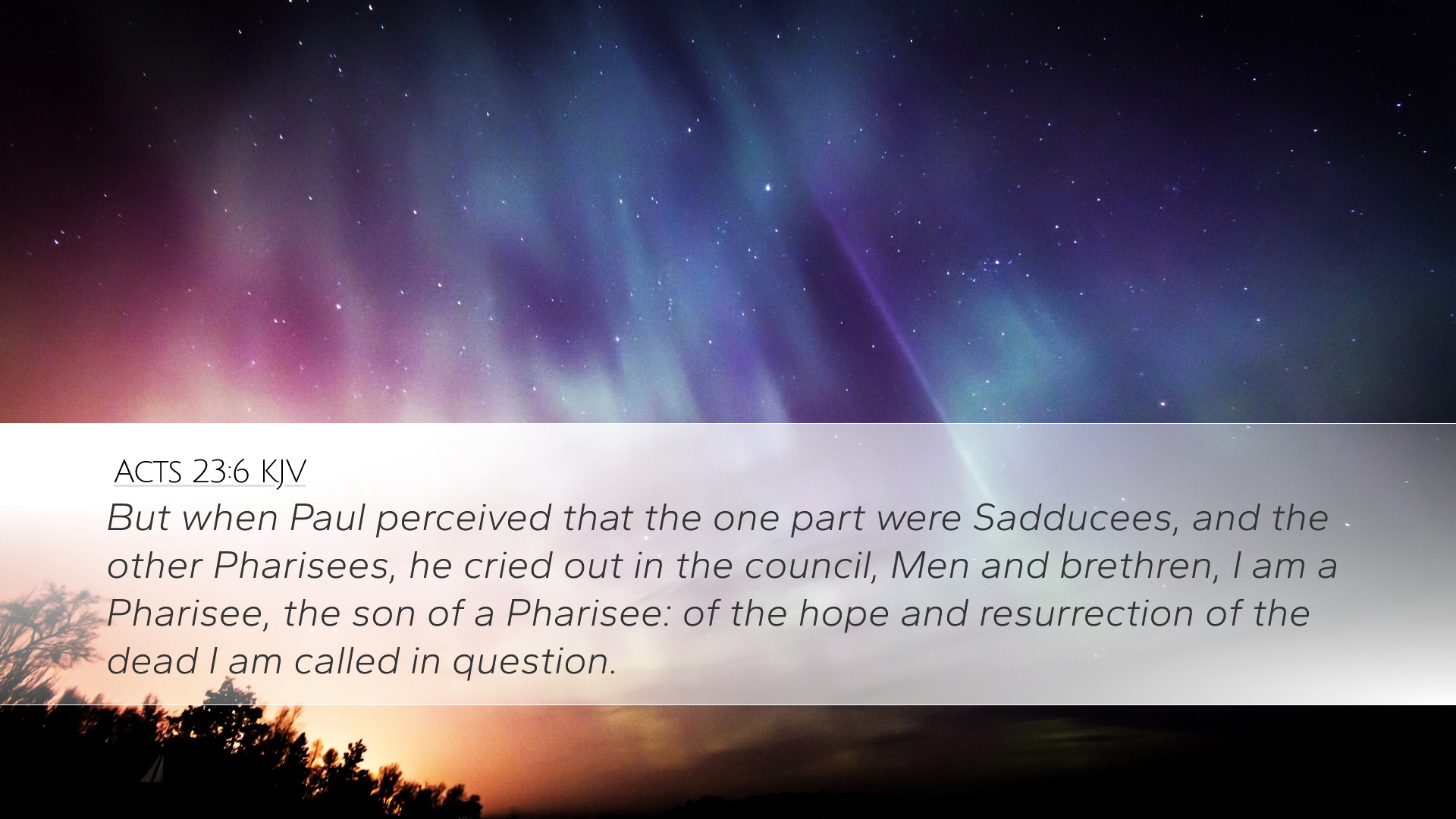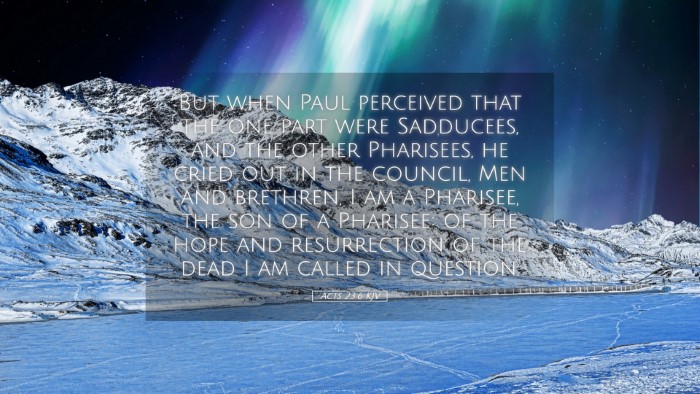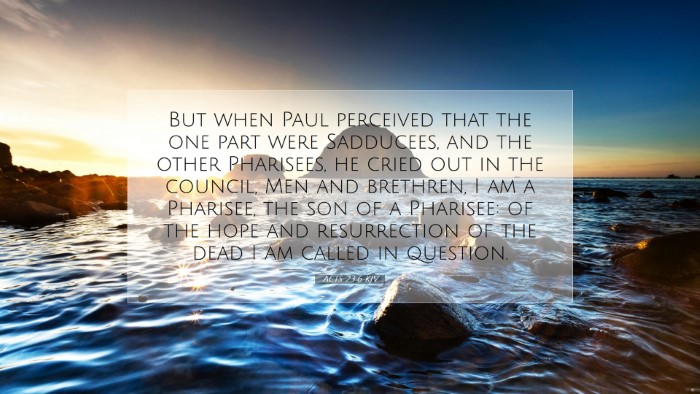Bible Commentary on Acts 23:6
Acts 23:6 states, "But when Paul perceived that one part were Sadducees and the other Pharisees, he cried out in the council, Men and brethren, I am a Pharisee, the son of a Pharisee: of the hope and resurrection of the dead I am called in question."
Contextual Overview
The setting of this verse occurs during Paul's trial before the Sanhedrin, which was composed of two prominent Jewish sects: the Sadducees and the Pharisees. This council played a pivotal role in the religious and legal matters of the time. Understanding this context is essential as we explore the implications of Paul's declaration regarding his identity as a Pharisee.
Exegesis
Paul's Perception
According to Matthew Henry, Paul's astute observation of the council's division between the Sadducees, who denied the resurrection, and the Pharisees, who affirmed it, demonstrates his wisdom. By declaring his Pharisaic lineage, Paul strategically positions himself among those who believed in the resurrection, drawing a sharp distinction within the council that might work to his advantage.
The Significance of Identity
Albert Barnes emphasizes the importance of Paul's identity. He notes that by identifying himself as a Pharisee and the son of a Pharisee, Paul underscores his strong Jewish heritage and credentials, which would resonate with the Pharisees in the council. This identification not only affirms his commitment to Jewish traditions but also aims to gain sympathy and support from the Pharisaic faction.
Hope and Resurrection
Paul's mention of "the hope and resurrection of the dead" serves as a theological pivot in the discourse, as Adam Clarke points out. It touches on one of the central beliefs that separated the Pharisees and the Sadducees. Paul boldly addresses the core of the dispute, which is emblematic of the gospel message itself: the resurrection of Jesus Christ. This declaration can be viewed as an apologetic approach by Paul, recognizing that the resurrection is foundational to Christian faith.
Theological Implications
The Nature of Resurrection
The resurrection is a theme that pervades the New Testament, and by raising this issue, Paul not only defends his position but also reintroduces a fundamental aspect of Christian doctrine to the Sanhedrin. According to Henry, the resurrection is not merely a doctrine but a hope that sustains believers amid trials and persecution.
Unity and Division
Paul's declaration highlights the divide within the council and serves as a lesson for contemporary believers. Barnes suggests that this tension between differing beliefs within religious communities can sometimes be exploited for the gospel's sake, urging Christians to recognize both their common heritage and theological differences.
Pastoral Applications
Defending the Faith
For pastors and church leaders, Paul's example demonstrates the importance of being wise and strategic in defending the faith. Clarke encourages leaders to discern the arguments against them and to respond with conviction but also with an understanding of their audience's beliefs, an approach that can lead to fruitful dialogue.
Grounded in Hope
Paul’s reference to hope reminds believers today that their faith is anchored in the promise of resurrection. This should challenge pastors to emphasize the hope found in Christ’s resurrection in their teachings, providing a foundation for strength in trials. Henry posits that hope is essential for perseverance and endurance in the face of challenges.
Unity Among Believers
Furthermore, the commentary suggests that amidst differing beliefs, Christians must strive for unity based on shared core convictions. Barnes notes that while differences are inevitable, they should not overshadow the shared hope in Christ. This calls upon the church to focus on the essentials of the faith, cultivating an environment of mutual respect and understanding.
Conclusion
Acts 23:6 stands as a moment when Paul wisely navigates a perilous situation through a thoughtful expression of his identity and beliefs. Through the insights of public domain commentaries, we glean rich theological and practical implications that challenge modern believers to hold firmly to their convictions, to communicate effectively within diverse communities, and to find strength in the promise of resurrection.


